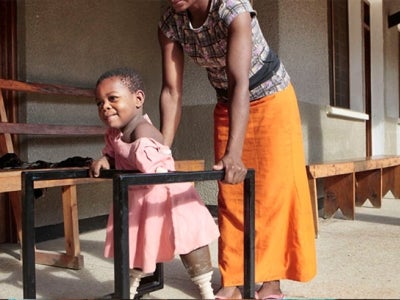
For 25 years, the GEF has had a positive impact on hundreds of communities and on the quality of life of thousands of individuals.
The Global Environment Facility (GEF) has joined forces with Paraguay’s Ministry of Environment to generate sustainable production alternatives, create opportunities, and improve the quality of life in the most vulnerable communities, and has provided US$1,400,000 in grant funding to the Pas Chaco project. The sum of US$440,000 was allocated for demonstration practices, with each pilot site receiving US$110,000. The initiative covers over 70,000 hectares and is providing training to some 4,000 persons.
For 25 years, the GEF has had a positive impact on hundreds of communities and on the quality of life of thousands of individuals. According to Dr. Carlos Monges, the Coordinator of the Pas Chaco project in Paraguay, these “funds are being transformed into actions.” The pilot sites—demonstration projects for sustainable land and forest management practices—are one such example.
There are four pilot sites in Paraguay: Mariscal Estigarribia, Filadelfia, Loma Plata, and Puerto Casado. Activities such as horticulture, beekeeping, medicinal plant gardens, handicrafts, small livestock farming, and forest management (silvopastoral system with Prosopis sp. and growth trials of the Bulnesia Sarmientoi) are being conducted on each site.
As a result, the awareness of persons who are exploiting the Gran Chaco Americano ecosystem has been raised, and they are replicating and disseminating environmentally friendly actions. All of the foregoing is contributing to a reduction in the pressure being exerted on forests and land, while increasing their conservation.
The Gran Chaco Americano is an exceptionally diverse ecoregion. Covering 1,066,000 km2, it is South America’s second largest forested area after the Amazon, stretching across parts of Argentina, Paraguay, Bolivia, and Brazil. Various stakeholders in the Boquerón department, such as the criollos, the Mennonites, and indigenous communities living in vulnerable conditions are therefore involved in pilot site activities.
Looking ahead, there are signs that improving people’s surroundings and quality of life will be no easy task. However, the desire shared by the countries and the GEF alike signals endless opportunities for economic, social, and environmental development, which in turn leads to greater efforts by national authorities. Training, increased use of good practices, and organization are key to improving application of the initiatives.
 Improving the comprehensiveness of projects is another critical factor. Pas Chaco stretches over three countries that share an extraordinary ecoregion, thus strengthening the overall impact in a meaningful manner. These crucial factors could ultimately pave the way toward sustainable development.
Improving the comprehensiveness of projects is another critical factor. Pas Chaco stretches over three countries that share an extraordinary ecoregion, thus strengthening the overall impact in a meaningful manner. These crucial factors could ultimately pave the way toward sustainable development.


